“Always changing” is how Anita, a patron at Ben’s Next Door, recently described the bar’s frozen cocktail selection. Hoping for a raspberry slushie, she instead got strawberry lemonade.
Change in any city is inevitable, but it’s especially apparent in local bars, and in a city where four- and eight-year presidential terms determine the “vibe.” Washington, D.C.’s emergence as a food and drink destination is just a decade or so old, and it continues to evolve in tandem with the city itself.
According to the National Restaurant Association, restaurants are a driving force of the District economy, with 2,457 eating and drinking locations reaching $4.4 billion in sales in 2018. D.C. restaurant and food service employment is expected to grow from 8 percent in 2019 to more than 14 percent in 2029, adding 4,000 jobs.
“D.C. has always had one of the most innovative, compelling food and drink scenes, but it’s expanding and finally getting recognized,” Derek Brown, president of Drink Company, which owns and operates Columbia Room, an award-winning cocktail bar, and PUB, a rotating pop-up bar, tells VinePair.
While there is a lot to celebrate, it’s important to remember new openings also indicate casualties of the city’s constant development. Ben’s Chili Bowl, a 1958 landmark opened by Trinidadian American Mahaboob Ben Ali and his wife Virginia Ali, has seen the city change tremendously throughout its tenure. Ben’s, located on U Street NW between 12th and 13th Streets, a.k.a. Ben’s Chili Bowl Way, is now steps from newly arrived national chains like Shake Shack and Peet’s Coffee on the 14th Street corridor.
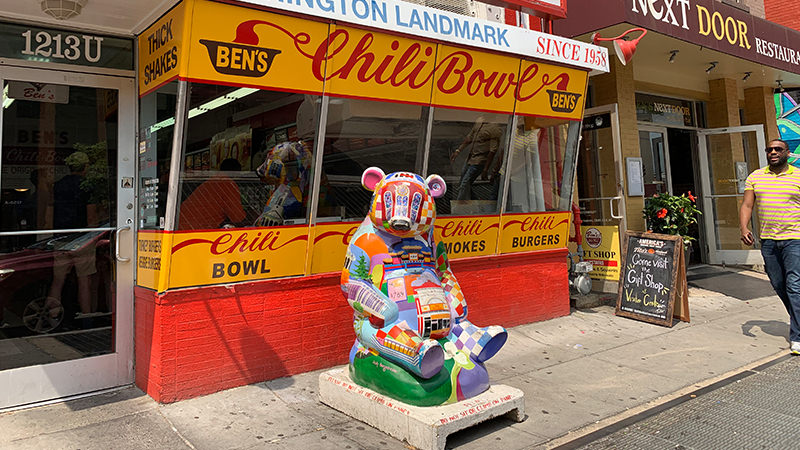
Ben’s has been far from stagnant: It opened Ben’s Next Door in 2008, and Ben’s Upstairs, on H Street, in 2015. Its “legendary half-smoke and fresh homemade chili” is now available at Reagan National Airport, Nats Park, and at two locations in Maryland.
Its impact on the city is undeniable. In 2016, Andre McCain opened HalfSmoke, a “sausage-centric millennial playground,” complete with “popsicles served inside Margaritas [and] a free photo booth,” in Shaw. HalfSmoke is part of a major uptick in bars, restaurants, and real estate developments throughout the city. Many locals attribute the revitalization of the dining and bar scenes to the Obama administration, from 2008 to 2016.
“The D.C. food and beverage scene has really exploded since Obama took office,” Julie Verratti, co-owner of Denizens Brewing Co., tells VinePair. “Obama really brought in a lot of young people, enthusiastic Gen X-ers, older and younger millennials. That sort of band of people born in the late ’70s through early ’90s going out and being social and supporting locally owned, independent businesses, especially food and beverage businesses, is a huge thing for us.”
With the current administration, she says, “It’s a different group of folks that are here now.”
Washington, D.C.’s reputation as a food and drink destination began to change around 2007. Restaurants such as Bad Saint, Little Serow, Toki Underground, and the newer Maydan brought fresh energy to the dining scene, earning it national accolades.
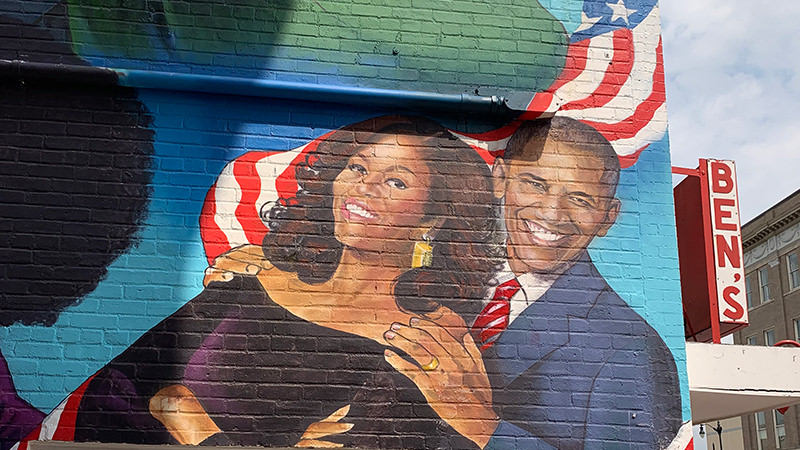
Bars were changing, too. Where “Bacardi Coke or Malibu Sprite, or terrible High Balls with tons of Maraschino cherries” once dominated drink orders, the “hotel bar scene” transitioned into creative cocktails with fresh juices, Chantal Tseng, bartender at Petworth Citizen’s Reading Room and 20-year D.C. service industry vet, tells VinePair. “That was such a big deal for this city,” she says.
Pop-up bars and collaborations “opened and widened the drinking scene and eating scene,” Tseng continues, with now-famous restaurants like Rose’s Luxury getting their starts in rotating kitchens. “It’s a whole other avenue that lets so many more people really get their ideas to fruition,” Tseng says.
Reading Room and other highly anticipated bars like the Dabney, Primrose, and Columbia Room slowly, then quickly transformed D.C. drinks.
“Chefs here and bar owners here really work together to lift each other up,” Laura Hayes, food editor at Washington City Paper, tells VinePair. “But that’s starting to change a little bit.”
After the initial restaurant renaissance, out-of-town empires followed, and the up-and-comers of the pre-2010 era started being priced out of their neighborhoods.
“Chains and groups firmly shut local business owners out of storefront opportunities because the skyrocketing real estate prices are only affordable to those entities with deep pockets,” Dr. Sunyatta Amen, owner of Calabash Tea & Tonic, a holistic tea room, vegan eatery, and multiple “Best of D.C.” award winner, tells VinePair in an email. “This inflation of real estate carries over into the residential market as well, making living in a city untenable for the average person.”
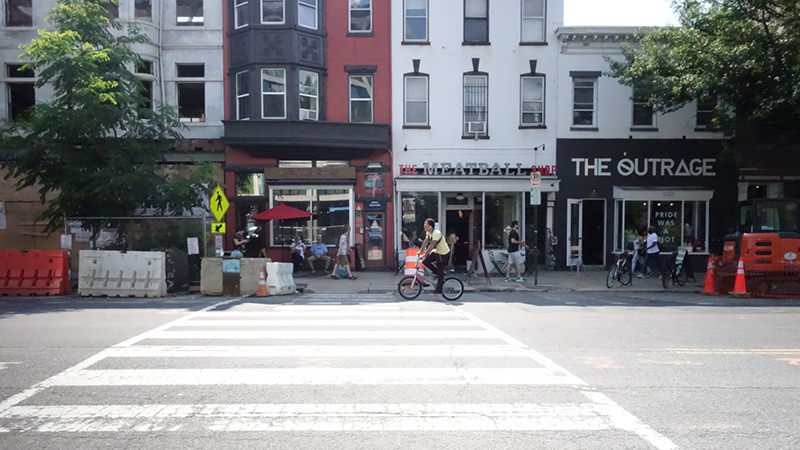
In April 2014, Peet’s Coffee began plans to open 23 locations in the District. The following March, Trader Joe’s launched a location at 14th and U Street NW.
Then came trendy NYC outposts, like The Smith, which opened in Penn Quarter in February 2017, and on U Street in May 2018. Brooklyn Winery debuted District Winery in August 2017. The Meatball Shop, a sandwich counter with six NYC locations, opened its first-ever outpost on D.C.’s 14th Street in October 2018. In June 2018, David Chang’s Momofuku Milk Bar opened on 15th Street, around the corner from Trader Joe’s.
And as Hayes recently reported, “New York-based wine bar chainlet Vin Sur Vingt Wine Bar [will] replace Drafting Table [at] 1529 14th St. NW” sometime in 2020.
For Verratti, opening Denizens in Silver Spring, about a mile and a half from the D.C. border, was something of a homecoming. “I lived here my whole childhood,” she says. She later lived in the Boston and NYC areas, and returned to D.C. for law school in 2007. In July 2014, Verratti opened Denizens with her wife Emily Bruno and brother-in-law Jeff Ramirez. The trio recently opened a second location in Maryland’s Riverdale Park neighborhood on Memorial Day weekend.
“As someone who grew up here, [moved] away for six or seven years and [came] back as an adult… there was definitely a stark difference,” Verratti says. Fourteenth Street, once known for sex work, now posts “rents over $100 a square foot,” she says. “Local mom-and-pop restaurants and bars can’t afford that rent.”
“One of the things that I do love about D.C. is that you can get any type of cuisine here,” Verratti continues. “As we like to call it down here, the DMV — District, Maryland, Virginia — we are sort of an area of immigrants. There’s a huge variety and a lot of diversity in terms of cuisines and the different types of food and beverages you can have. That being said, the food and beverage business is highly capital intensive, and unfortunately when it comes to access to capital, if you are anything other than a white, straight man, your ability to get the capital you need to open your business just goes down.”
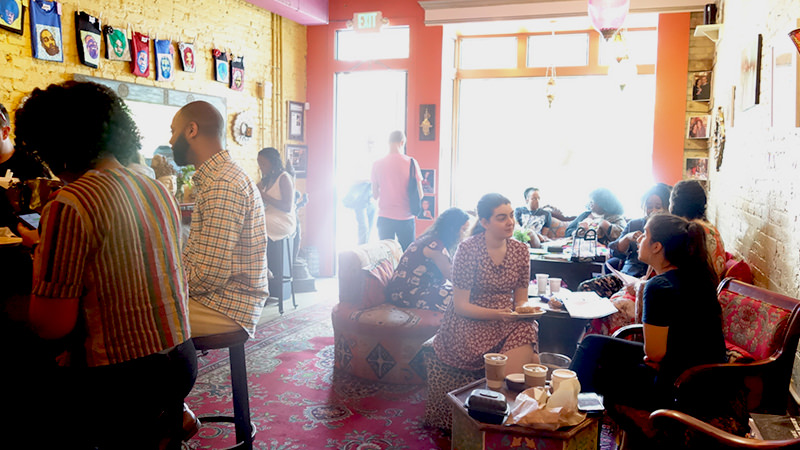
Some are breaking the mold. HalfSmoke, on Seventh Street, “is really catering to the Howard University crowd,” Verratti says of its proximity to and popularity among students of the acclaimed historically black university. Restaurant founder McCain formerly worked in investment banking and real estate development, and was able to raise $2 million in investment to open his restaurant.
“As far as I’m concerned, a key measure of success is to have the employees that work with us and the people in the community around us better off than before we came,” McCain told Washington Business Journal in 2016. “I’m really trying to grow HalfSmoke into a great company, not just another restaurant.”
Kwame Onwuachi, a Food & Wine 2019 Best New Chef and James Beard Rising Star Winner Executive Chef, opened fine dining restaurant Kith/Kin in October 2017. Dishes draw inspiration from Onwuachi’s heritage, which spans Nigerian, Jamaican, West African, and Caribbean, and restaurant experience in New Orleans and New York.
Of course, a business can be new and still serve its community, and its owners don’t need to be local to cater to their residents.
“We have a very, very diverse crowd [at Denizens], and part of that is because the community that we’re in is extremely diverse,” Verratti says. This includes race, gender, age, ethnicity, immigration status, and disability status, she says.
This has a lot to do with proximity, but Verratti says she and her co-founders are also “very proactive about that,” using the brewery’s two levels and beer garden to host a wide range of events. (It also doesn’t hurt that Verratti is immediate past chair and a current member of the Brewers Association Diversity Committee.)
One weekend at the brewery, Verratti says, “[We] had this cannabis open house happening in the downstairs taproom, upstairs was an agnostic Bible study, and then the very next day, upstairs was a 1-year-old’s birthday and downstairs was a drag show. We try to do the things that folks in our community want to participate in.”
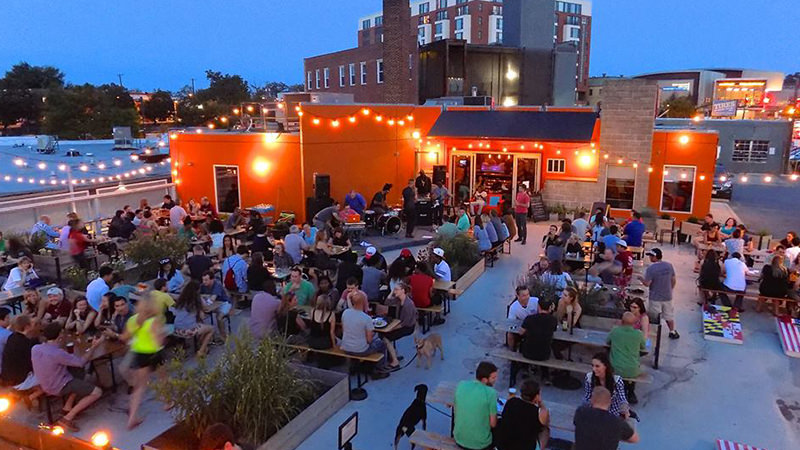
Hayes believes D.C. is still a “locally obsessed dining scene.”
Marvin, a Marvin-Gaye-inspired restaurant on 14th Street specializing in cuisines from Belgium and the American South, organizes community events like a grilled cheese social that draws a diverse crowd.
In Silver Spring, Verratti says, “we have the largest population of Ethiopian people other than the country of Ethiopia. Within a mile radius of my house, there are over 20 different Ethiopian restaurants… which I love, because I love Ethiopian food.”
Additionally, black-owned businesses like Ben’s, Calabash, and HalfSmoke are recognized by grassroots efforts such as DMV Black Restaurant Week.
Despite gentrification and the displacement of many businesses and residents, D.C.’s diverse dining culture persists. In the District as in other cities, Amen says, “local and independent eateries provide a window into culture.” You just have to look.
